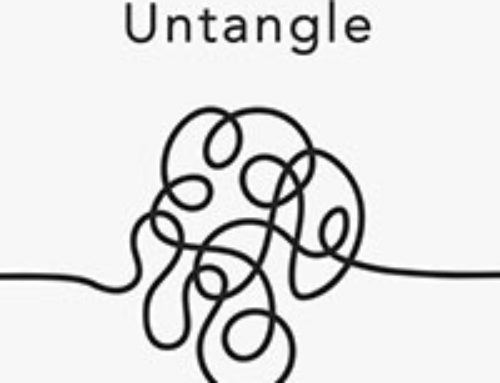The editors of Awake at the Bedside: Contemplative Teachings on Palliative and End-of- Life Care want to make one thing very clear: this book is not about dying, it’s about life and what it can teach us, it’s about caring and what giving care really means.
Equal parts instruction manual and contemplative testimony ,this book addresses how we think about death and dying and examines current practices in palliative and end-of-life care, with important suggestions for improvement.
Key elements to this new way of approaching the end of life include both presence and a way to make the interaction between ‘us’ and ‘them’ more collaborative, and with any spiritual luck, more beautiful.
Zen teacher Koshin Paley Ellison, who co-founded the New York Zen Center for Contemplative Care (NYZCCC) in 2007 with Robert Chodo Campbell have transformed the narrative around end-of-life practice on a national level. In just nine years, NYZCCC has brought contemplative care to 80,000 individuals, and has trained more than 600 physicians, nurses, social workers, and chaplains. Thirty-five medical residencies across the country have integrated their curriculum.
What Ellison and co-editor Matt Weingast have to teach us is invaluable – wisdom and counsel for those who keep watch at the bedside. The Buddhist approach brings a grace to an often difficult and frightening time that is beyond comforting, it’s life-changing.
And the nicest part is that all of this is shared with an abundance of joy and the kindest and best of intentions. A gift.
I’ve written before about how loss and dying changed my own life and was honored to interview Koshin Paley Ellison about this book:
Nancy Doyle Palmer : Can you elaborate on what is new about the ways you approach end-of-life care in this book?
Koshin Paley Ellison: We are because of relationships. The New York Zen Center for Contemplative Care is focused on how to live an engaged life, and we do this through study, care and meditation. All three aspects are integral in our view of how to offer contemplative care. Contemplative care is a practitioner who maintains their own deep meditation practice with a community and teacher, who understands that everything and everyone is a teacher, and who come alive through constant study and realizes that care is a practice of generosity. I understand generosity as giving and receiving as one. So, there is no “self-care.” If we care we include ourselves and others.
When I set out to create this book, I wanted to have all the voices of people on the ground doing the work—from the pioneers of hospice and grief work to contemporary contemplative teachers and caregivers. Matt, my co-editor and dear friend, and I culled together all those we love and feel nourished by. We did this because this is the approach to contemplative care—we can’t do it alone in a singular voice. This is what is new and old. We used to value community more. So, this book is about remembering there are so many vital voices to nourish and support us. To do this well, we need each other. So, this book’s approach is a reminder of community and practice and to engage fully. How do we each do that? As one of the marvelous contributors writes, “Feast on your life.”
NDP: How do you work with people, particularly of an older generation, who do not wish to talk about their feelings or have frank discussions about the fact that they are dying?
KPE: Most of us live in unspoken fears. I was training a group of seventy doctors, with Chodo, and we asked them what they are afraid of. Pain, loss, change were the themes. So ordinary. In my experience, people are afraid, and when I meet someone who does not want to talk about their feelings or speak frankly, I ask them what they want to talk about.
I had the privilege to meet a middle aged man with metastatic cancer said, “I don’t do feelings.” He told me about the baseball game, and how he was worried that his team was not going to make it to the world series this year. “They always go,” he said. So we talked about baseball, and how it was an anchor for him in his life, and how his winning team was not making it, broke his heart. It made him sad. “What will happen to them?” he asked. “What do you imagine?” I said. “I don’t know,” he said, “I am just worried they will fall away into insignificance.” “What then?” I asked. “Well,” he said looking out the window, “I guess we all have our time.” “Sounds like that is really true for you,” I said. “Yep,” he said, “it is really true for me too. I am disappointed and yet okay with it too. I go with me team.”
We are always telling our whole story. To me, we can just learn to pay attention and receive fully where the person is without an agenda. Without needing to talk about something in a particular way. Of course this is easy to say and takes a life time to practice. And this is the joy of practicing care and meditation. It is a lifetime of curiosity and investigation.
NDP: What do you advise when the person who is facing end-of-life is fearful, panicked, anguished, in turmoil? How can that person be helped?
KPE: I am a very curious person now. So if someone is afraid, I am curious about their fear and anguish. The best help is not to try to fix them and to not try to push away those feelings because I am uncomfortable with them.
Recently I met a woman in her fifties who was raging and in pain. She was dying and really was sure this was not supposed to happen. When we talked together we told me how she had waited her whole life to retire so that she can begin to really live and fulfill her “bucket list.” This was not going to happen, and she was howling in pain about it. It felt as if the universe had conspired against her. This howling needs to be heard. It isn’t easy, and yet most valuable moments in life are not easy—they take diligence. Like all the great stories of the worlds religions and myths—it isn’t just about the simple way. And yet, the simple way to meet ourselves and others in the moment. She told me she now really related to the Virgin Mary because she had to suffer her son dying and not growing old. “The thing is,” she said, “I know I am not going to grow old and it pains me. I was living for another time.” “What is the time you have?” I asked. “Two months,” she said. “How do you want to be in that time?” I asked. “Maybe just be really angry and bitter,” she said. “Okay, that’s possible,” I said. She looked at me surprised, and said “What did you say? Did you say that is possible?” “Yes” I said. “Wow,” she said. You are the first person to say that.
Everyone is always trying to tell me they are going to find a cure and to cheer up. Everyone is so f—cking uncomfortable with me. The truth is I don’t want to do that stewing in misery. I want to live these days differently.” “That’s also possible,” I said. And for the first time, her face softened and almost appeared to smile.
She reminds me we need to be heard and that is the heart of Awake at the Bedside. It is not called How I am Comfortable at the Bedside. We can be awake to all the joys and sorrows and be forever changed. This is why I am so honored to be able to live this life.
NDP: What has been your biggest challenge with people in the medical community concerning end-of-life issues?
KPE:The biggest challenge is the treatment of people as people. This is not a new event. It turns out that the oldest stories in the world are about people treating each other in challenging ways. Of course, we also live in a time when we send the sick to hospitals, the elderly to nursing homes and the dying to hospices. Old age, sickness and death are such powerful teachers. So, the book and our organization are about doing the radical pivot—turning towards what we fear and being a source of compassion and wisdom in the places of great suffering. We will all get older, get sick and die. The historical Buddha reminds us that our actions are our only true belongings. So, we have the unique opportunity to engage through study, care and meditation. We have the opportunity to plunge fully into life. What will you do with your days? This is the great question to live with each day.
Follow Nancy Doyle Palmer on Twitter: www.twitter.com/NancyDPalmer






Recent Comments